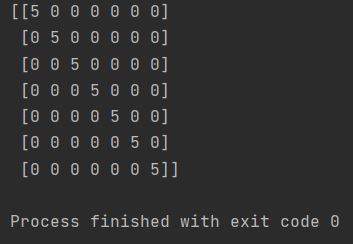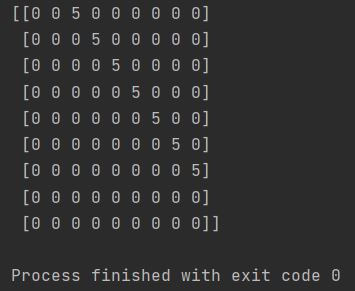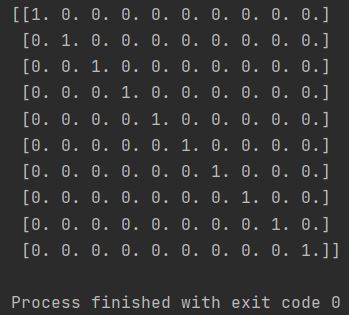Diagonal arrays are useful for various applications, including linear algebra, image processing, and more.

How to Generate a Diagonal Array in Numpy Using diag
To generate a simple diagonal array, you can use the diag function provided by NumPy. This function creates a square matrix with the specified values along the main diagonal.
import numpy as np diagonal_array = np.diag([5, 5, 5, 5, 5, 5, 5]) print(diagonal_array)
This code snippet generates a diagonal array with the value 5 along the main diagonal:

How to make an extended diagonal array
To create an extended diagonal array, specify a second parameter in the diag function to offset the diagonal.
import numpy as np diagonal_array = np.diag([5, 5, 5, 5, 5, 5, 5], 2) print(diagonal_array)
In this example, the diag function generates an extended diagonal array with the value 5, shifted two positions from the main diagonal:

How to Make a Diagonal Array Using the eye Method
A similar effect can be achieved using the eye function from NumPy.
import numpy as np diagonal_eye_array = np.eye(10, 10) print(diagonal_eye_array)
This code creates a diagonal array with dimensions 10×10:

NumPy supports higher-dimensional arrays, enabling creation and manipulation of more complex diagonal structures. Understand the power of numpy diagonal for diverse array manipulation and creation in Python.
